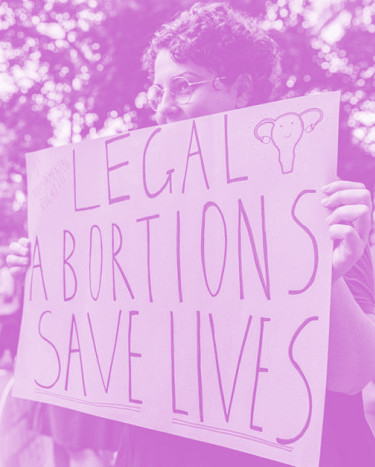US impacts local leaning
 Researchers have investigated what fuels young Australians’ abortion fears.
Researchers have investigated what fuels young Australians’ abortion fears.
An Australian study has found American social media content and the powerful US pro-life lobby are fuelling stigmatisation perceptions among Australian young people who may wish to seek out and use safe abortion services.
“Our online survey received more than 70,000 responses, making it the largest ever, and begins to fill the gaps in limited understanding about abortion stigma in Australia to date,” says Flinders University researcher Kari Vallury.
“International research shows abortion stigma leads to poorer social and mental health outcomes for abortion seekers, and can cause them to avoid seeking health care. It even deters health professionals from offering abortion services, limiting its availability in much of Australia.”
The online survey measuring abortion attitudes, beliefs, knowledge, stigma and personal characteristics was developed with input from eight national and global experts and statistically weighted to ensure geographic and voting preferences align with Australian averages.
So far, the study found:
-
The vast majority of people in Australia support access to abortion care on demand, however 65 per cent of the sample anticipate that people who have an abortion are likely to experience harassment
-
Not supporting abortion is related to frequent religious attendance, conservative values and sexism
-
People most concerned about experiencing negative social consequences related to abortion were more likely to be pro-choice, non-religious, young, not a parent, and politically left-leaning
-
People most likely to think the Australian community is anti-abortion were those who attended religious services once a week or more frequently, vote Liberal or National, didn’t have an abortion experience, had poor abortion-related knowledge, scored highly on measures of sexism and help anti-abortion attitudes
Further in-depth interviews with 20 young Australians found many factors affected their anticipation of abortion stigma, including:
-
Primary news sources from US social media often augmented their perceptions of Australians’ abortion stance
-
Awkwardness or complete denial of the existence of abortion in key settings and people – in school, like the exclusion of abortion from sex ed, in media e.g. with presenters often talking about abortion in unemotional, detached ways, and parents who were awkward to discuss abortion – taught young people abortion is taboo
-
Religious schooling or reliance on parental support and fear of dropping out of education on life prospects impact young people’s experience of stigma
-
Media taught them it was contested, and made them fearful because of the combative nature of the debate
“Some of the protective factors that can help to combat abortion stigma include normalising abortion conversations, at home, at school and in the media, and providing young people with the right information about providing safe and accessible abortion services, their safety, commonality and how to access them” says Ms Vallury.
She also says it is important to address overarching drivers of stigma, such as laws, policies, a lack of abortion services, and social discourse which stereotypes and discriminates against people who have and provide abortions.







 Print
Print